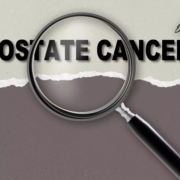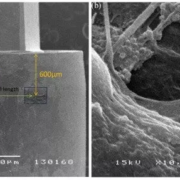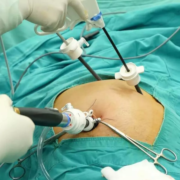Limiting new fast-food outlets may reduce childhood obesity, reveals research

Planning policies to restrict the number of new fast-food outlets leads to fewer overweight and obese children according to research led by Lancaster University.
Researchers examined the impact of policy in the North East of England where Gateshead Council prevented any existing non-fast-food commercial property from being converted into a hot fast-food takeaway.
The lead authors of the study, published in the journal Obesity, are Dr Huasheng Xiang from Lancaster University Management School and Professor of Health Inequalities Heather Brown from the Faculty of Health and Medicine at Lancaster University.
The researchers used Government collected data that included: children’s weight from the National Child Measurement Programme, Food Hygiene Ratings from the Food Standards Agency, and deprivation and population measures from the Office of National Statistics.
They also assessed Gateshead neighbourhoods with comparable areas across the North East. Across the whole borough they found no significant change in childhood overweight and obesity between Gateshead and the areas of comparison.
However, when they looked at neighbourhood deprivation, they found that, in those areas with the highest proportion of fast-food outlets, the Gateshead neighbourhoods were associated with a statistically significant reduction in the prevalence of childhood overweight and obesity in comparison with corresponding neighbourhoods in the North East.
In sub-group analysis by area level deprivation, they found that those quintiles of deprivation within Gateshead with the highest proportion of fast-food outlets had a statistically significant reduction of 4.80% in the prevalence of childhood overweight and obesity in comparison to comparable neighbourhoods in the North East.
Professor Brown said: “Given that a majority of local authorities in England have implemented planning policies that target hot food takeaways, if these are like Gateshead’s and are suitably robust and restrictive, it is possible that they could contribute to our efforts to reduce childhood overweight and obesity. Furthermore, given that such food establishments are found in greater density in more deprived communities, such policies may help reduce health inequalities.”
Alice Wiseman, Director of Public Health at Gateshead Council and Newcastle Council, said: “Creating environments which support access to healthy affordable food is one of the biggest public health missions of our generation.
“The challenge of healthy weight and access to nutritious food is complex, ever changing, and hard to resolve. There is no silver bullet, and several interventions are needed to create real, impactful, and lasting change.
“It’s great to see, when teams across local government come together with full institutional support, how robust planning policies can chip away at such challenges to facilitate healthier and more resilient communities.”
Reference:
Huasheng Xiang, Louis Goffe, Viviana Albani, Nasima Akhter, Amelia A. Lake, Heather Brown, Planning policies to restrict fast food and inequalities in child weight in England: a quasi-experimental analysis,Obesity, https://doi.org/10.1002/oby.24127.
Powered by WPeMatico





















